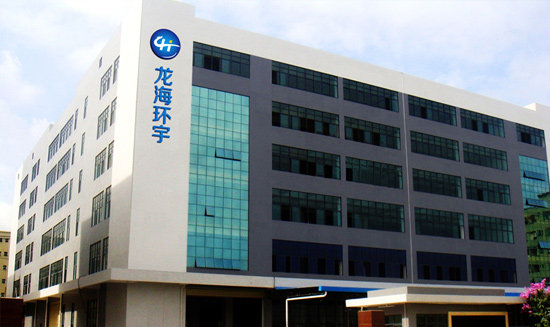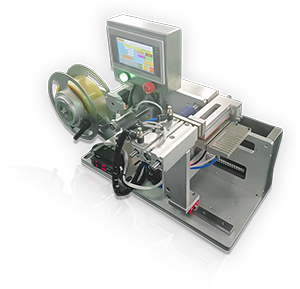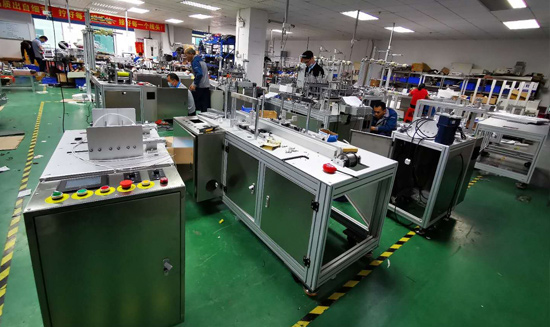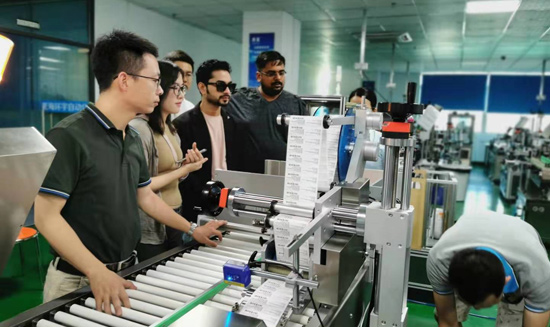视觉贴标机工业相机选型指南:原理、应用与技术趋势
视觉贴标机工业相机选型指南:原理、应用与技术趋势
一、工业相机的核心原理与特点
工业相机是视觉贴标机的核心组件,其通过感光元件(CCD或CMOS)将光信号转换为电信号,再经模数转换生成数字图像,为贴标定位提供精准数据支持。
1. 核心原理
-
CCD相机:通过逐行扫描输出信号,灵敏度高、噪声低,但成本较高,适合高精度场景。
-
CMOS相机:采用并行信号处理,集成度高、功耗低,适合高速动态检测,近年来在分辨率和噪声控制上大幅提升。
2. 核心特点
-
高速高帧率:支持每秒数百至数千帧拍摄,满足生产线高速贴标需求。
-
抗干扰性强:适应高温、高湿、粉尘等恶劣工业环境,稳定性远超普通相机。
-
精准成像:逐行扫描技术确保图像无拖影,分辨率可达0.01mm/像素,支持亚像素定位。
二、工业相机在视觉贴标中的应用范围
视觉贴标机对工业相机的选择需结合具体应用场景:
1. 通用包装行业
-
需求:标签位置精度±0.2mm,检测速度200-500件/分钟。
-
推荐配置:500万像素CMOS相机,全局快门,搭配C接口镜头,支持GigE传输。
2. 高精度电子行业
-
需求:微小型标签(<1mm²)贴合,抗金属反光干扰。
-
推荐配置:1200万像素CCD相机,偏振光源,支持硬件触发和光纤传输。
3. 透明/曲面包装
-
需求:解决透明薄膜反光或曲面变形导致的识别偏差。
-
推荐方案:3D结构光相机,结合点云数据计算[敏感词]贴标角度。
三、工业相机选型关键技术参数
1. 分辨率与视野计算
-
公式:分辨率 ≥ 视野范围 / 精度要求
示例:检测10mm物体,精度0.02mm,则需分辨率≥500像素(10/0.02)。
2. 帧率与曝光时间
-
动态产线:帧率需≥产线速度(件/秒)×1.2,曝光时间≤1/(2×运动速度)。
3. 接口与传输
-
高速场景:优先选择CameraLink或CoaXPress接口,支持10Gbps以上传输。
-
长距离布线:GigE接口支持100米传输,适合分布式产线。
4. 环境适应性
-
高温环境:选择工作温度-10℃~70℃的工业级相机,如海伯森HPS-HSC2K。
-
防尘防水:IP67防护等级,适用于食品、化工等潮湿环境。
四、技术趋势与创新方向
1. 智能化集成
-
AI算法嵌入:支持本地化缺陷检测与自适应参数调整,减少对PC的依赖。
-
自学习系统:通过历史数据优化匹配模板,提升换型效率。
2. 3D视觉技术
-
结构光/ToF方案:实现曲面贴标精度±0.05mm,适用于化妆品瓶、异形包装。
3. 超高速成像
-
全局快门+高帧率:如海伯森HPS-HSC2K支持1490fps@2048×1080,满足超高速产线需求。
4. 边缘计算优化
-
FPGA/ASIC加速:将图像处理算法集成至相机端,延迟降低至微秒级。
五、选型建议与维护要点
1. 选型流程
-
明确需求:精度、速度、环境条件(如光照、振动)。
-
硬件匹配:分辨率≥理论计算值,接口兼容现有系统 。
-
验证测试:通过实际产线样品验证成像稳定性与算法兼容性。
2. 维护保养
-
日常清洁:使用无尘布与纯酒精擦拭镜头,避免手指接触光学表面。
-
定期校准:每季度进行九点标定,确保机械-视觉坐标一致性。
六、未来展望
随着工业4.0的深化,工业相机将向多模态感知(融合3D、红外、光谱数据)和云端协同(远程运维、模型在线更新)方向发展。视觉贴标机的智能化升级,将推动工业相机在柔性制造、定制化生产中发挥更大价值。













 微信咨询
微信咨询